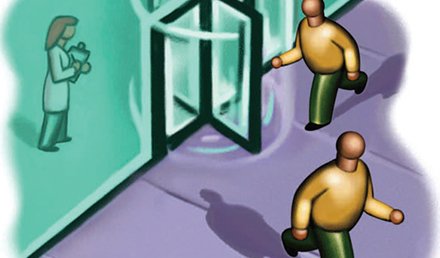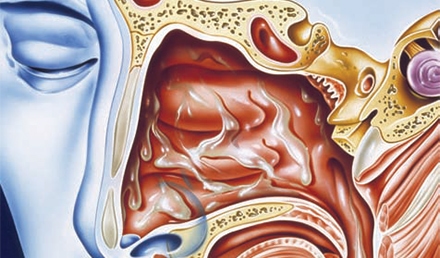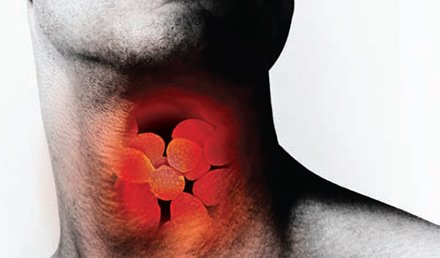The patient is an 82-year- old man who slipped on the street, experiencing a blow to his right shoulder. He has significant local swelling in the injured shoulder specifically, over the acromioclavicular joint as well as significantly limited range of motion. His distal pulses are normal. View the x-ray taken (Figure 1) and consider what your diagnosis and next steps would be. Resolution of the case is described on the next page.
Read More
The Case of a 37-Year-Old Man with Headaches
It is common knowledge that each patient needs to have a symptomspecific evaluation with each visit, but it is easy to be misled by “frequent fliers” who have presented many times with the same complaint. Take this month’s case, for example: a 37-year-old man with a headache who had four emergency department and two primary care visits before finally receiving the correct diagnosis. Accuracy and vigilance must be the goal of each patient encounter, no …
Read More
Management of the Patient Presenting with Epistaxis
Urgent message: Though patients with posterior and bilateral epistaxis should be admitted to the hospital, the vast majority of epistaxis episodes can be treated safely and effectively in the urgent care setting. Nathaniel Arnone, MD, Samuel M. Keim, MD, MS, and Peter Rosen, MD Epistaxis is a common presenting complaint, with 15 per 10,000 people requiring medical attention each year.1 While the presence of blood in the pharynx can cause concern for both patients and …
Read MoreIs Urgent Care “Real” Family Medicine?
Lee A. Resnick, MD, FAAFP I am acutely aware that urgent care medicine is practiced by a variety of specialties. However, family physicians make up the majority of those who practice in urgent care settings, and represent the most likely contingent of practitioners to fill the increasing demand for qualified practitioners in the future. As an organization, UCAOA has made several steps toward improving the competency of family physicians entering the field, from formal training …
Read MoreClinical Challenge: September, 2008
The patient is a 7-year-old boy who presents to urgent care at midnight with a four-day history of fever and cough. Two days prior, a throat culture administered elsewhere showed nothing suspicious. The parents brought him to urgent care tonight because of increasing chest pain, which began after the visit to the primary care physician. On exam, you find the child is not in respiratory distress, but has decreased air entry on the left side …
Read MoreAbstracts in Urgent Care: September, 2008
Vasopressin Not Helpful for Out-of-Hospital Cardiac Arrest Key point: For now, epinephrine remains the only evidence- based drug option in CPR. Citation: Gueugniaud P-Y, David J-S, Chanzy E, et al. Vasopressin and epinephrine vs. epinephrine alone in cardiopulmonary re- suscitation. N Engl J Med. 2008;359:21-30. The ideal drug regimen for use in CPR is a subject of controversy. Epinephrine is the recommended vasopressor agent, but results of some studies suggest that combining epinephrine with vasopressin …
Read More
Pharyngitis: Diagnosis and Treatment in the Urgent Care Setting
Urgent message: Sore throat is a complaint commonly encountered in urgent care. Proper evaluation and understanding and use of appropriate antibiotics will foster better patient care and understanding while limiting antibiotic resistance. William Gluckman, DO, MBA, FACEP and Jessica Kay, PharmD Pharyngitis refers to the inflammation or irritation of the pharynx, including the tonsils, and can have many etiologies, including a variety of infections, cancer, allergic reactions, gastroesophageal reflux, or toxic inhalations and ingestions. This …
Read MoreUCA in the News
Lee A. Resnick, MD, FAAFP UCA has been a busy organization of late. The announcement of an alliance with the Joint Commission is big news, indeed. We recognize that this news may not be welcomed by all, but are confident that most of your preconceptions will not be validated by the process. I think we all can agree on the goals of an urgent care accreditation program: First and foremost, it should be “urgent care …
Read MoreClinical Challenge: August, 2008
A 34-Year-Old Male Who Injured His Finger
This patient, a 34-year-old male whose pre and post-reduction x-rays are shown here (Figure 1 and Figure 2), presented to urgent care after sustaining an axial injury to his fourth left finger while playing a weekend game of football. FIGURE 1. PRE-REDUCTION Reduction proved physically chal- lenging to more than one practi- tioner. A physician who happened to be on site tried unsuccessfully to reduce the dislocation at the time it occurred, then recommended the …
Read More